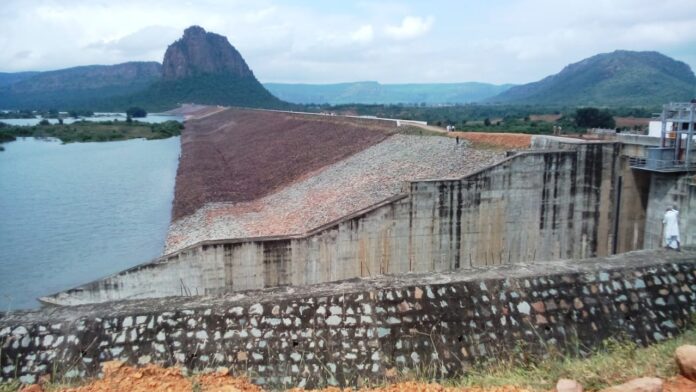Rohtas/Kaimur: Decades’ long wait for the farmers of Kaimur and Rohtas districts—known as rice bowl of Bihar—is unlikely to end soon, even as the Water Resources Department (WRD) has set December as target to finish and fully operationalise the decades’ old Durgawati reservoir scheme with its optimum capability.
Started in 1975, the reservoir scheme, clubbed with even older Kudra weir project, is expected to create around 32,000 hectare of culturable command area (CCA) once it’s opened by the month-end after completion of its canals and distribution network.
WRD Minister Sanjay Kumar Jha said that efforts were on to resolve the issues cropping up in acquisition of land to build six distribution systems. “The dam and other components like slipway and main canals and 13 distribution channels are complete, while work on other channels is in full swing. Some land acquisition issues are there in parts of 13 different distribution channels, which are being resolved,” said the Minister.
The Durgawati reservoir scheme always figured prominently in the electoral speeches of the leaders, as it was the founded during the Congress regime and on the insistence of Jagjivan Ram during his stint as Union agriculture and irrigation minister. Ram, who also served as the Indian National Congress (INC) chief, used to get elected from Sasaram Lok Sabha constituency.
Also Read: Har Ghar Jal: 50% households in rural India get tap water supply
Officials said that embankments of the reservoir was still to be strengthened, while issues in land acquisition hit the construction of its distribution channels on both right and left canals. The left canal is about 22km long, while the right main canal goes up to 34.50km far from the reservoir. “Effectively, we are able to ensure irrigation to about 55% of the original target so far. Hope, the irrigation cover would go up to 75-80% by the end of this year,” said an executive engineer of the project.
Initiated well with major component like the dam and parts of main canal getting in shape, the project started biting the dust after the Union Ministry of Environment and Forest declined granting its sanction to carry on work in nineties for the land falling under the forested areas and wildlife sanctuary. Shortage of funds and absence of works machinery also hampered the project. “However, chief minister Nitish Kumar started pursuing the scheme with the Centre personally and got the final forest clearance in 2011. The work resumed again in 2012, but by that time, main structure and canal system of the project had suffered extensive damages,” said Jha.
A senior officer of the WRD said that the inordinate delay had led to massive escalation of the cost of project. “The cost of project, which was initially pegged at ₹25.30 crore, has risen to almost ₹1,096 crore last year. The cost escalation was also attributed to rehabilitation of Kudra weir scheme, located at 27km in the downstream of river Durgawati dam, also got degraded for want of regular water supply,” he said.
The project was partly inaugurated by then Chief Minister Jitan Ram Manjhi in 2014 after all major components of the project was rebuilt. “However, farmers could not make the best of the water in canals for want of distribution channel. The irrigation network was built in parts later on and around 24,194 hectare of land was provided irrigation in the last Kharif season,” Jha said.
The scheme up on its completion will ensure water to the fields of blocks like Bhagwanpur, Rampur, Kudra, Adhaura, Mohania and Durgawati in Kaimur and Chenari, Shivsagar and Sasaram of Rohtas district.
Durgawati reservoir project
- Year of start: 1975
- Total culturable command area: 32,464 hectare
- Blocks to benefit: Bhagwanpur, Rampur, Kudra, Adhaura, Mohania & Durgawati (of Kaimur), Chenari, Shivsagar and Sasaram (of Rohtas)
- Initial project cost: ₹25.30 crore
- Current revised estimate: ₹1096cr




